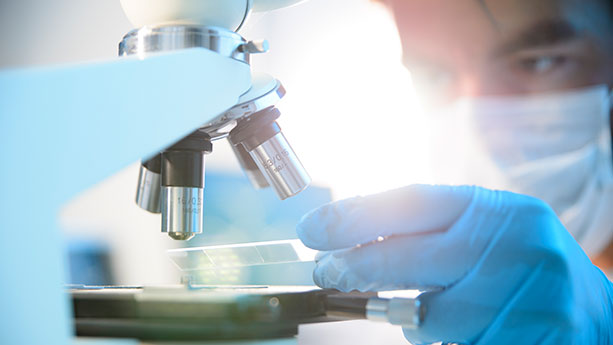When you are experiencing a breathing problem, an accurate and timely diagnosis is essential to creating a treatment plan that will improve your health and help you feel better.
In the Sutter Health network, respiratory specialists offer a wide range of diagnostic services to identify pulmonary disorders and start you on the road to recovery. Here are some of the tests we offer.
Pulmonary Function Tests
Many different tests are used to evaluate pulmonary function. These tests can focus on:
- How well your lungs can take in and release air
- What may be causing breathing difficulties
- The severity of a known lung disease
- Effectiveness of a treatment plan
Spirometry and peak airflow tests are among the most commonly used pulmonary function tests, which measure how fast and how much air you can breathe in and out.

These tests can also be used to differentiate between an obstructive lung disease, such as COPD, and a restrictive lung disease, such as pulmonary fibrosis.
Blood Gas Tests
These tests measure the oxygen level in your blood in one of two ways. A sample of your blood is drawn and sent to a lab to be analyzed, which is called an arterial blood gas test. Or, a small device is used to measure your oxygen level in a pulse oximetry test, which does not require a needle. Pulse oximeters are also used to monitor oxygen saturation during an overnight saturation study.
Diagnostic Bronchoscopy
A diagnostic bronchoscopy imaging test allows your doctor to view inside your airways and lungs. If you are having problems breathing or have a persistent cough or infection, your doctor may order this test to help diagnose the problem or collect a tissue sample for further analysis.
Diagnostic CT Screening
A diagnostic computed tomography (CT) scan uses X-rays to create 3-D images of the lungs. This test may be used to get a clear view of the chest area and look for infection, fluid or blood clots in the lungs.
Low Dose Screening CT
During this screening test, your body is scanned and low doses of radiation are used to make detailed images of your lungs. This test is typically used to screen for lung cancer in high-risk individuals.
PET Scan
During a lung PET scan, a technician injects a small amount of a radioactive substance into a vein in your arm. The PET scan tracks how quickly areas of your lungs absorb the substance, which indicates how well your lungs and surrounding tissues are working. The results are 3-D computer images that help your radiologist look for disease and get a more detailed view of your lungs.
Ultrasound
Also called ultrasonography, ultrasound uses sound waves to produce images of your organs, blood vessels and other structures in your body. Your doctor may recommend this test to check for fluid or other abnormalities in your lungs and chest area.
Ventilation Perfusion Lung Screening
This test uses small doses of radioactive substances to measure how well air circulates and blood flows through your lungs. Your doctor may use this test to look for blood clots in the lungs.












